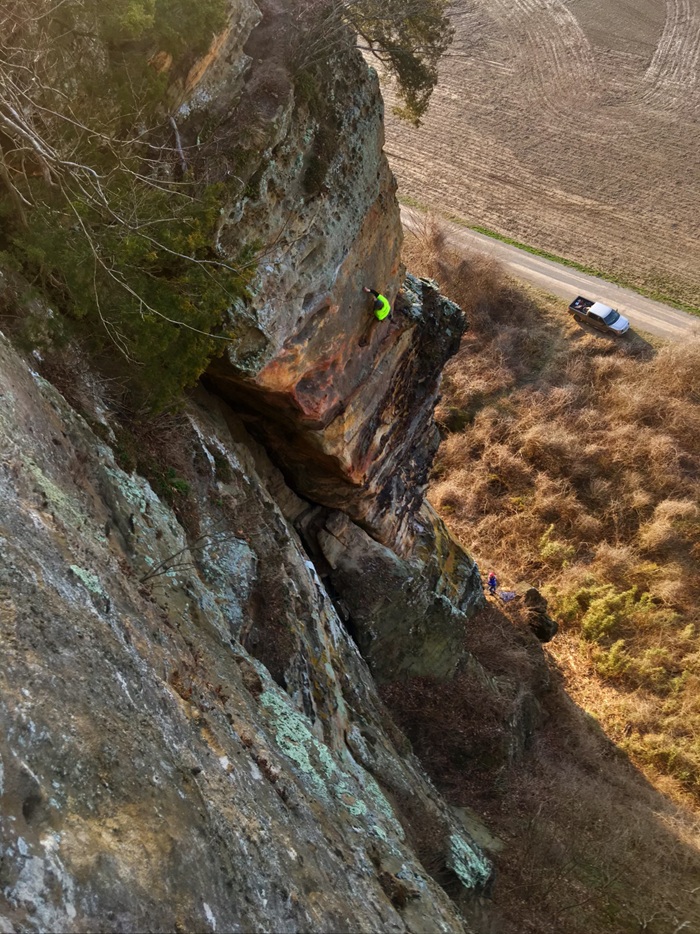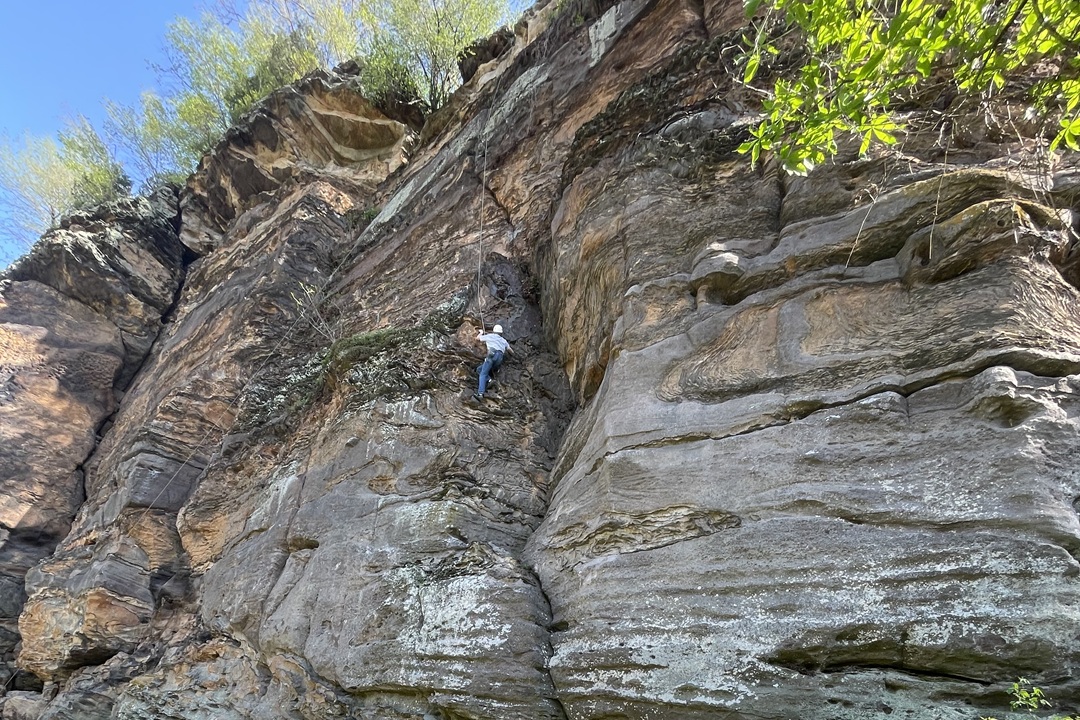Developing and maintaining climbing access in the Midwest is usually the result of grassroots activity by local organizations like the Illinois Climbers Association (ICA) and Beta Fund. Sometimes, though, it happens on an even smaller scale. In these cases, it’s often due to the verve and vision of one man: Jim Thurmond.
A fixture in the Midwest climbing scene since the 1980s, Thurmond has been instrumental in developing several climbing locations in the area, including Robinson Bluff in Tiff, Missouri. A talented climber, he also holds several first ascents at Jackson Falls, including Damn Yankees, Flaire, and The Bolted One.
For his latest contribution, Thurmond purchased, bolted, and developed a new climbing spot in Southern Illinois called Fountain Bluff. It’s now open to climbers, and all the route information is available on Mountain Project.
Years in the Making
Thurmond’s relationship with this land goes back decades. He began climbing trad routes here in the 1980s. “It’s a conglomerate of sandstone and limestone,” says Thurmond. “Entire sections are like Jackson Falls, except taller. I have acres of Jackson Falls-type climbing: overhanging, beautiful rock, hard patina.”
After years of climbing and bolting, Thurmond was so enamored with Fountain Bluff that he bought it in 2019. His main motivation? A pure love of the sport of climbing and a deep desire to share it with others. “All I want to do,” says Thurmond, “is let people know, like, ‘Hey, guys, come climb. Tell everybody you know.’”

Jim Thurmond at Fountain Bluff. (Jon Richard)
Fountain Bluff appears to be another jewel in the crown of Southern Illinois climbing. It features over 100 routes, primarily sport, with many routes in the 5.11 to 5.13 range. Around 20 routes are multi-pitch, which is unusual for the area.
“In the past, North Carolina or Colorado were my choices to get a legit multi-pitch,” Thurmond says. Now, these routes allow climbers to cut their teeth and practice their multi-pitch skills before climbing big walls out West.
In addition, the single-pitch sport routes are much longer than the ones at nearby Jackson Falls and Ferne Clyffe, allowing climbers to build endurance.
Despite the expense that bolts entail, Thurmond and his compatriots have prioritized safety. “A lot of the routes, there’ll be 15 bolts on a pitch, and that’s a single pitch from the ground,” says Thurmond. “They’re really well-bolted.”
The area’s natural beauty was as much of a draw for Thurmond as its climbing potential. “It is the second-most biodiverse area of its size in the entire United States,” says Thurmond. “There’s a documented 1,200 species of plants.”
In the spring, so many flowers bloom that the crag could pass for a botanical garden. “You’d be hard-pressed anywhere in the United States to see more different species of birds,” says Thurmond. “I mean, there’s eagles in your face. It overlooks the Mississippi River, which is the main flyway. To protect it, I’ve now got it signed up as an official natural area.”

Fountain Bluff is a conglomerate of sandstone and limestone. (Jim Thurmond)
More Than a Crag
In Thurmond’s ideal scenario, Fountain Bluff isn’t just a crag. He wants it to become an outdoor destination. This past winter, he farmed over 200 feet of ice, making it a rare spot in the area to ice climb. (It’s about a two-hour drive from St. Louis.) Mountain bike trails are also in the works on the property. And Thurmond would love to host a climbing festival or competition here, similar to the ICA’s annual Pilgrimage at Holy Boulders.
Thurmond is still ironing out details of the ICA’s role in stewardship of the land, but the organization will likely be involved in bolt and anchor management. (For updates about Fountain Bluff and its climbs, check mountainproject.com.)
It’s hard to overstate Thurmond’s magnanimity and how much it has simplified access. Normally, getting permission to climb on privately owned property can be pretty challenging, mired in legal and financial obstacles. But this isn’t the case with Fountain Bluff. “I’m not making any demands: We have access, and there’s no pressure,” says Thurmond, who just wants climbers to appreciate the area. “It’s hard to describe the beauty of it, but it’s real, and when you finish climbing here, you feel like you’ve gone somewhere else.”
Author: Mary Andino is a frequent contributor to Terrain.
Top image: A view of Fountain Bluff. (Jim Thurmond)


Leave A Comment